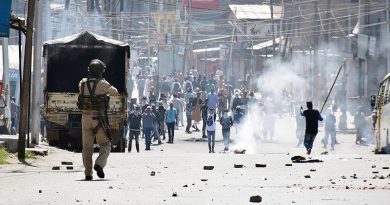Gaza Ceasefire: Trump’s 20 Point Plan
Hasini Muddapu
Staff Writer
After two long years of the devastating conflict in Gaza, Israel and Hamas have agreed to a ceasefire and prisoner exchange. This marks a significant and hopeful shift after the death of almost 70,000 Palestinians and 2,000 Israelis. Israel had degraded Hamas’ abilities but there has been immense public pressure from the Israeli people as the war’s toll grew significantly. Hamas was under pressure by Egypt and Qatar and had to reach an accommodation with the Israelis. On October 9th, the Israeli cabinet approved the ceasefire deal. The Washington Post writes that this agreement would be in effect starting October 10th. Al Jazeera reports that the Israeli government’s inner war cabinet and the full cabinet had to ratify the deal before it went to effect. The deal consisted of three important principles: the exchange of hostages and prisoners, the withdrawal of Israeli soldiers from Gaza, and the transportation of humanitarian aid. This process stemmed from President Trump signaling he wanted an end to the war.
This agreement is intended to break the cycle of violence and death as well as to reach a sustainable arrangement. The first component that makes up this agreement is the ceasefire and the troop movements. All artillery, ground operations, and artillery were put to a halt. According to the Foundation for Defense of Democracies (FDD), this suspension allowed civilians to travel to Northern Gaza. Israel then had to partially withdraw its troops from Gaza. The second part of this agreement was the release of all Israeli hostages. Hamas agreed to release all 20 living hostages and the bodies of 28 deceased hostages. BBC writes, “All 20 living hostages were released on Monday, in exchange for 250 Palestinian prisoners in Israeli jails and 1,7186 detainees from Gaza.” The third component is to provide humanitarian relief and access to civilians. This agreement mandated opening the border crossings in Rafah, aid convoys, medical supplies, fuel, and materials for reconstruction in Gaza. According to AP News, Rafah is a lifeline for Gaza. It is the only way Gazan civilians have access to the outside world. The last component consists of governance and security. There are several unresolved issues that have not been addressed by the peace plan. For example, how can Hamas and other armed groups stop their military activity? Who will govern Gaza during the peace process? Is it going to be Hamas, the Palestinian authority, or something new? How will the third-party oversight work? Will there be international actors investing in the better for Gaza?
In terms of the internal dynamics in Gaza, Hamas wants to reassert control. Specifically, it had deployed armed troops and wanted to eliminate collaborators. The New York Post writes that the IDF says the underground tunnel network of Hamas is a serious security threat and should be destroyed immediately. In terms of the global dynamics, The United States and other countries play active roles. For example, mediators and diplomats have expressed a desire to move from the first phase to disarmament, governance, and peace between the two countries.
Earlier this month, the ceasefire signifies hope for what could be permanent peace. The success of this agreement depends on the actions of helping those in need, the return of the hostages, fair security and governance, no political pressure, and for other countries to be engaged and help rebuild Gaza. For many Palestinians and Israelis this ceasefire is hope for life and peace.
Image courtesy of Getty Images.

